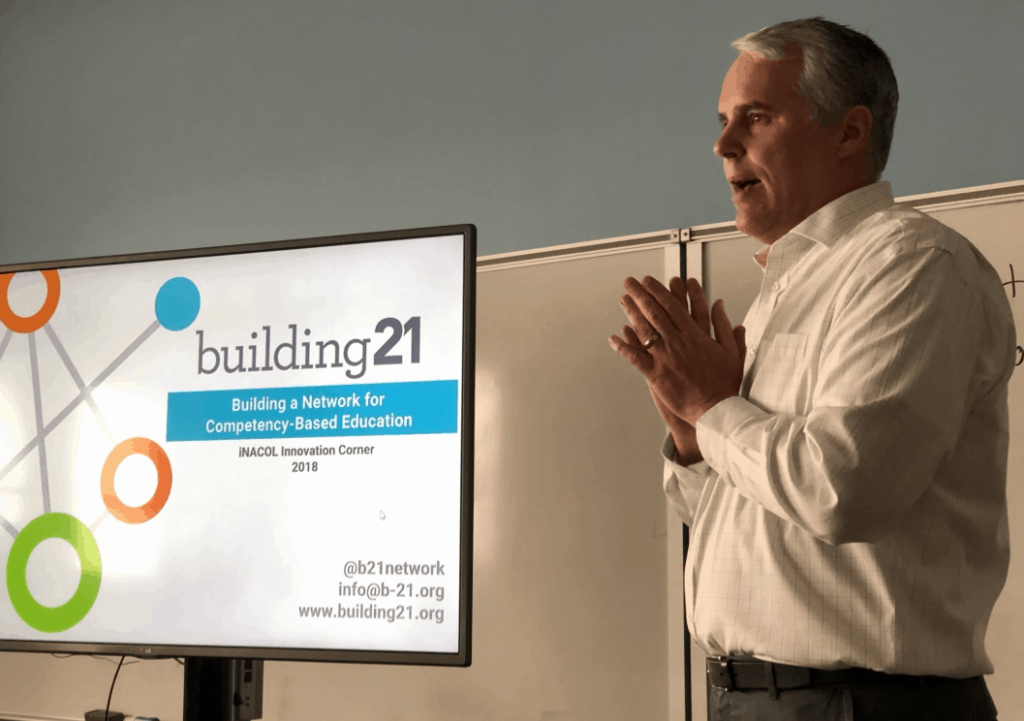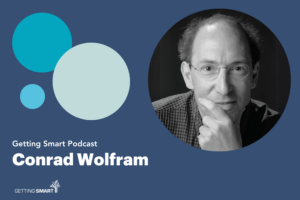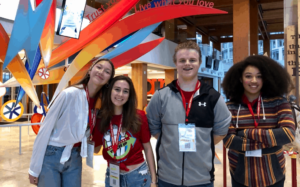Building 21: Bold Outcomes, Innovative Model, Next-Gen Network

A Pennsylvania nonprofit operates innovative schools in Philadelphia and Allentown under contract to the districts. Five more schools have joined the Building 21 network (@b21network) to take advantage of their outcome framework, assessments, systems and professional learning experiences.
The Building 21 team developed an outcome framework in 2014. After NGLC released the MyWays framework in 2016, they developed a synthesis mode that includes five outcome categories: core content, next-gen essentials, habits of success, wayfinding and personal development.
Core content includes English Language Arts which, for example, includes seven competencies and dozens of subskills all detailed in rubrics.
“We’re trying to uncover growth and make as transparent as possible,” said Tom Gaffey, Chief Instructional Technologist. Tom asks, “Can we create a new school model with growth as the foundation?”

“Achieving these competencies doesn’t come easy. Students need an advisor, a fierce advocate,” said Linehan.
The goal is personalized pathways where student strengths and interests shape a journey through foundational skills to college and career readiness. The first two years of the high school model are foundational with a focus on building skills and connecting to why. The upper division is a launchpad to what’s next.
The Building 21 learning model stresses strong relationships, problem-based learning, real-world learning experiences and competency-based assessment.
The Building 21 mission is “Empowering networks of learners to connect with their passions and build agency to impact their world.”
Beautifully crafted shared values include:
- Power: ability to realize positive change through the just exercise of power.
- Mindfulness: Non-judgmental attention to the present moment enables
- Interconnectedness: the connection of ideas, information, people and experiences.
- Responsibility: consider, understand and own the effects of our actions
- Courage: taking risks and persevering through setbacks and failures; and
- Transparency: open and honest in all of our communication.
Building 21 is supporting affiliate schools in South Carolina, Idaho, and Illinois. Collectively the network serves over 3,000 students. Operated and supported schools are each in a different place on the journey to personalized and competency-based learning.
Make it Right
Students in Philadelphia come to Building 21 at an average of a fifth-grade reading and math level. More than eight in 10 have experienced significant trauma. Two mental health workers support students and lead a climate of restorative practices.
“Rather than punishment we try to figure out what’s really going on,” said co-founder Laura Shubilla.
Students are given an opportunity to “make it right” by the end of the day. When that doesn’t happen, students are given a hearing in youth court, a classroom set up as a courtroom where upper-division students deal with discipline issues like disrespecting teachers or bullying other students. The focus is on restoration rather than punishment.
A law professor comes a day a week and team teaches a class for students in the legal pathway. A 21th Century Schools grant supports a wide variety of after-school activities and therapy groups. An early release on Friday creates time for staff collaboration.
“We try to take experience and use it authentically,” said co-founder Chip Linehan.
Visit Building 21 sites in Philadelphia or Allentown to see early versions of high school models that are personalized and competency based. You’ll also see evidence of a well-crafted network strategy to achieve impact at scale.
For more, see
- The Progressive Schools of Philadelphia
- Students Ask Big Questions At Science Leadership Academy
- Building 21: Designing a Network for Competency-Based Education
- Breaking out of the Boxes at Building 21 (CompetencyWorks)
- Building 21’s Competency Dashboard (CompetencyWorks)
This post was originally published on Forbes.
Stay in-the-know with innovations in learning by signing up for the weekly Smart Update.





0 Comments
Leave a Comment
Your email address will not be published. All fields are required.